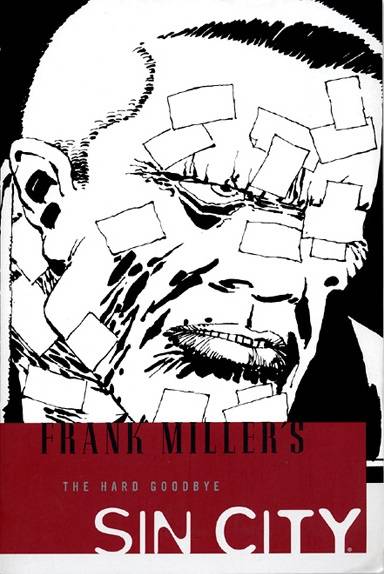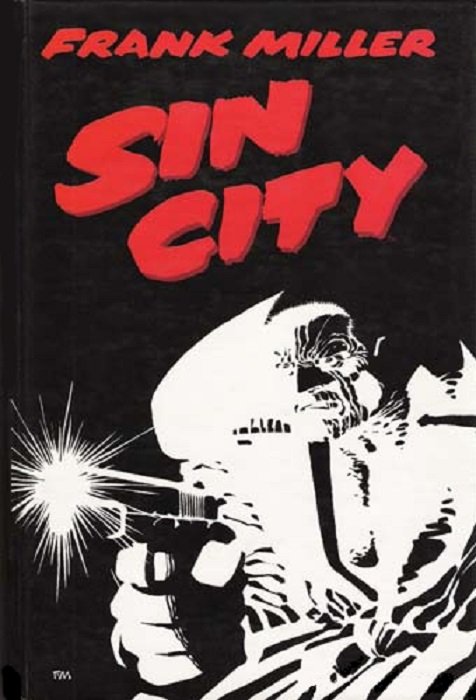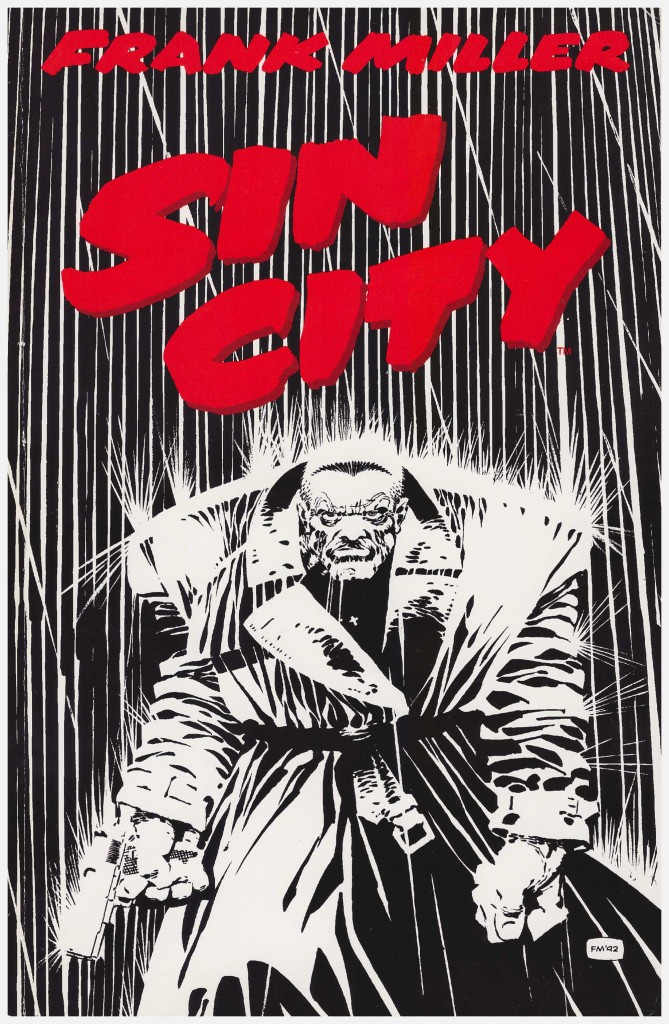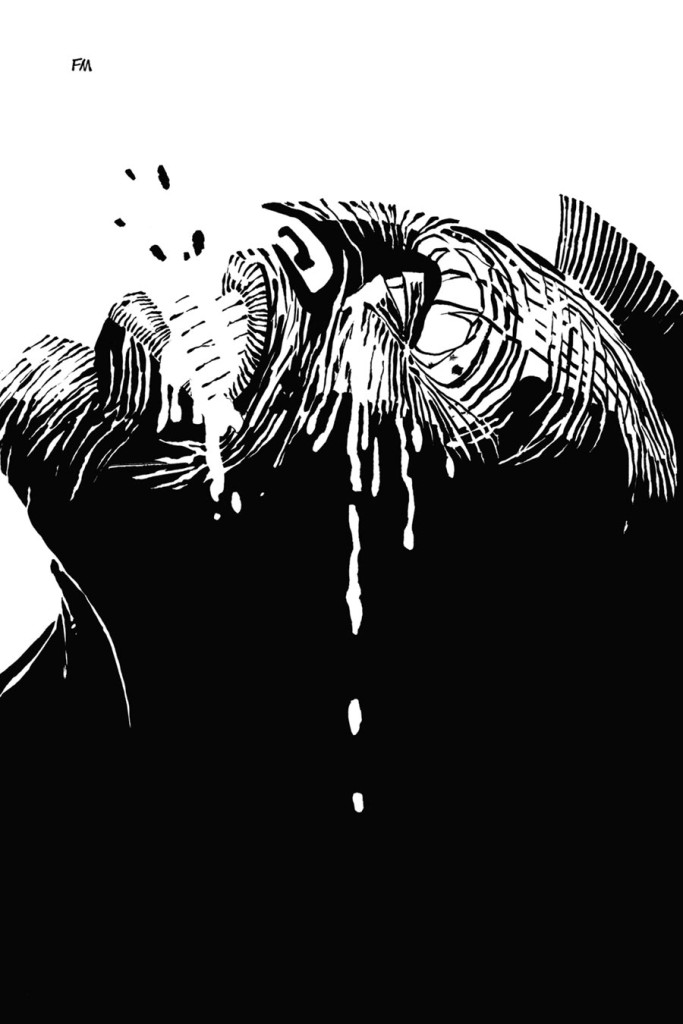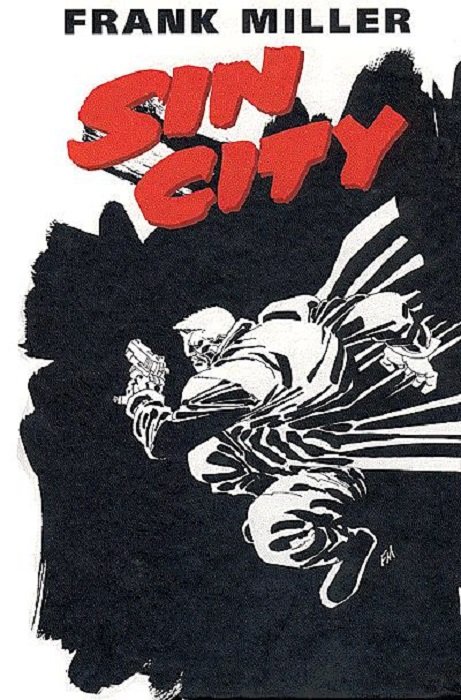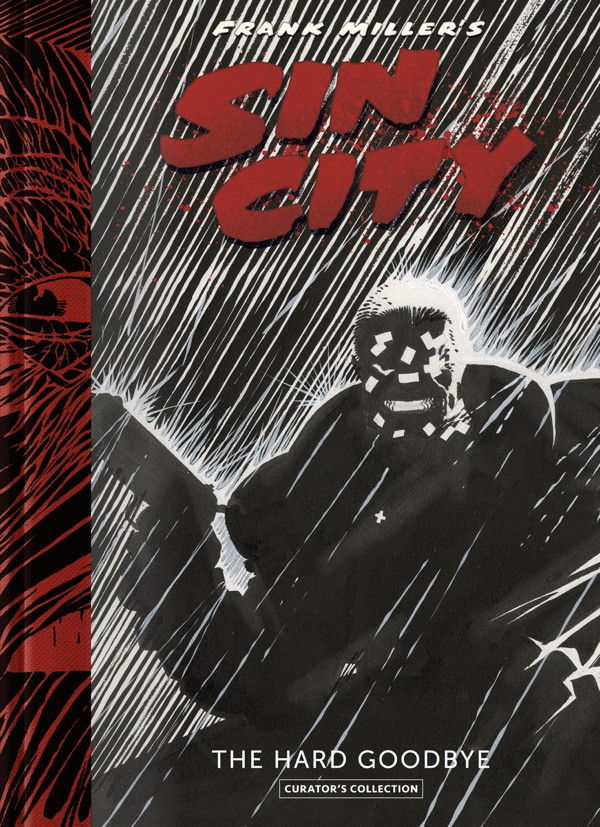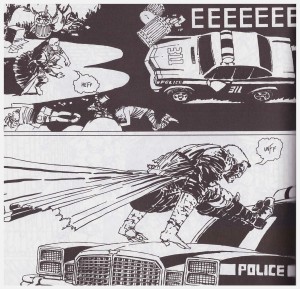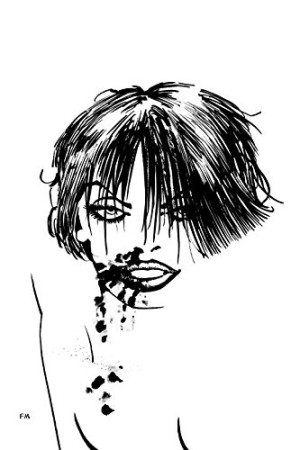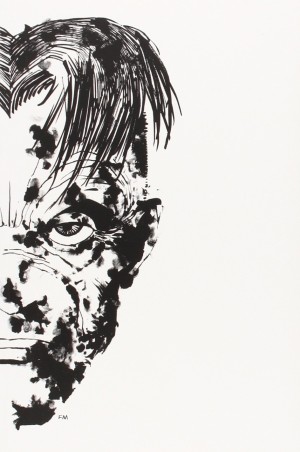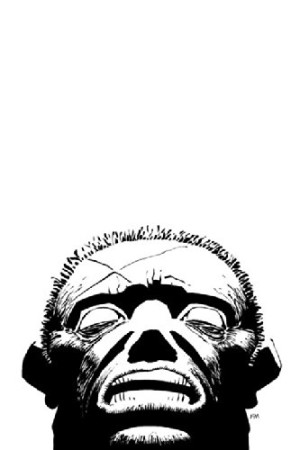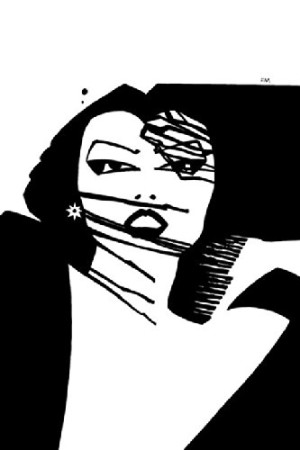Review by Frank Plowright
In 1987 Frank Miller was in a position relatively unusual for a comic creator of the era. Not only was he able to pick whatever his next project would be, he’d also be able to pick a home for it. Such is the luxury of a man coming off the phenomenal success of his startling re-imagining of Batman in the future, The Dark Knight Returns. Where Miller very assuredly stepped next was to independent publisher Dark Horse with the bleakest of noir crime milieus in Sin City. His opening punch took the grim atmosphere into which he’d steeped Daredevil and Batman and cranked it up with all the violence and sexuality not permitted at Marvel or DC.
We’re introduced to Marv, and instantly know that Marv represents a signature role in crime fiction, that of the patsy. He’s big, he’s brutal, and when off his meds he’s even more brutal, but that’s the limits of his capabilities, and there are always those a level above mere brutality jerking at those strings.
Marv wakes up one morning after a great night of drunken sex only to discover that the woman beside him is dead, and when he hears police sirens he’s aware enough of his environment to know he’s been set up. Marv makes his escape in spectacular fashion, and sets about discovering who set him up, a task complicated by someone resembling his dead partner attempting to kill him.
The world Miller creates is barren and without hope, sordid, violent and unforgiving and Miller depicts it with relish in large panels starkly contrasting light and shade. He starts with the black, artistically underlining the noir mileu, and scratches the white in long straight lines across Marv’s face, along his coat, and indicating the sleeting rain. It’s a stunning effect, and more than any other of the series this book is packed with the images around which the story is constructed. Miller even throws in a pastiche of an iconic Batman image he designed. Later Sin City books deal with less primal forces, and the plots are constructed with greater depth.
In case it’s not been accentuated enough, there are elements graphically depicted here that many will find thoroughly unpleasant, possibly beyond the pale, particularly the unsavoury habits of the villain. In isolation, here, and at its worst in this book, it can be passed off as story content, but throughout the series Sin City presents a very poor attitude toward women. In seven books, one an anthology, there’s only one sympathetic female character not also a prostitute, but she’s a victim. When women are consistently portrayed as hookers, manipulators, killers and victims with no other roles available, it builds a pattern.
With the exception of The Big Fat Kill following A Dame to Kill For, The Sin City books can be read in any order. The location is the connecting aspect, but they occur at different times, although there are connection points, most often in a bar where several dramas are occurring simultaneously.
This was originally released just as Sin City, but as more books followed, and this moved through several printings, it was retitled The Hard Goodbye. It’s collected with the other six books in the oversize hardback Big Damn Sin City, and also available in a 2016 Curator’s Collection presenting the entire story via high quality scans of the original artwork.
